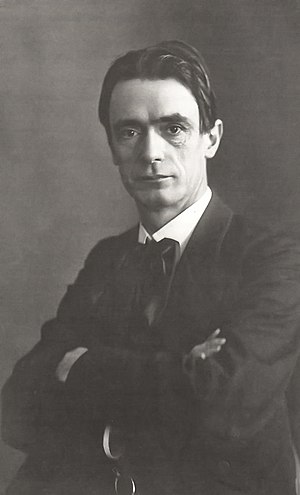Želo Caldorsa
This article is a work-in-progress because it is incomplete and pending further input from an author. Note: The contents of this article are not considered canonical and may be inaccurate. Please comment on this article's talk page to share your input, comments and questions. |
Želo Caldorsa | |
|---|---|
 Caldorsa c. 1932 | |
| Born | Bogerio Aculeus Caldorsae 25 December 1888 Truřov Province, Caphiria |
| Died | 16 April 1976 (aged 88) Lardianare, Ranaella Province |
| Nationality | |
| Other names | Zelonis |
| Education |
|
| Occupation | Author, architect, philosopher, poet |
Notable work | The Drama of Language in a Distraught Society, On the Justification for War in a Vanishing Culture |
| Movement | Parigergatusophy |
| Spouse(s) | Salmira Morroerbierri
( m. 1921; died 1928)Sabruța Ferà ( m. 1944) |
| Family | Caldorsa Estate |
Želo Caldorsa (25 December 1888 - 16 April 1976) was a Caphiric philosopher, author, occultist, social reformer, architect, esotericist, and claimed clairvoyant. Caldorsa first gained prominence in the late-the nineteenth century as a literary critic while enrolled at Castarra University. As a student, Caldorsa self-published several works under the alias Zelonis - most notably The Drama of Language in a Distraught Society, which became one of his fundamental philosophical works. After graduating, Caldorsa founded an esoteric spiritual movement known as parigergatusophy, with roots in Caphiric humanism and theosophy. Many of Caldorsa's ideas are pseudoscientific and he was also prone to pseudohistory. Caldorsa believed in a harmonic balance between science and spirituality - which he called the parigergat. In the early-20th century, Caldorsa began working collaboratively in various artistic media, including drama, dance, and architecture, culminating in the building of the Parigium, a cultural center to house the various art.
Only months after completing his PhD in 1935, Caldorsa was drafted into the Imperial Legion to fight in the Second Great War. While on patrol, Caldorsa's cohort was ambushed and suffered heavy casualties. With only 24 survivors, Caldorsa and the remaining healthy soldiers were sent home. After he returned home, Caldorsa became active in a wide variety of cultural contexts and various applied projects, including Caldorsian education - which later influenced the Acelector-Magnis philosophy. He also founded a system of organic agriculture, now known as biodynamic agriculture, which was one of the first forms of modern organic farming. Despite some of his medical ideas being important to the development of a broad range of complementary medications and supportive artistic and biographic therapies, Caldorsa's work in medicine is based in pseudoscience and occult ideas and are considered ineffective by the medical community.
Caldorsa's literary estate is broad. Caldorsa's writings, published in about 60 volumes, include books, essays, four plays ('mystery dramas'), mantric verse, and an autobiography. His collected lectures, making up another approximately 300 volumes, discuss a wide range of themes. Caldorsa's drawings, chiefly illustrations done on blackboards during his lectures, are collected in a separate series of 40 volumes. Many publications have covered his architectural legacy and sculptural work. His work has influenced a broad range of notable personalities, and his influence on architecture, furniture design, dance, education, and agriculture is still seen today.